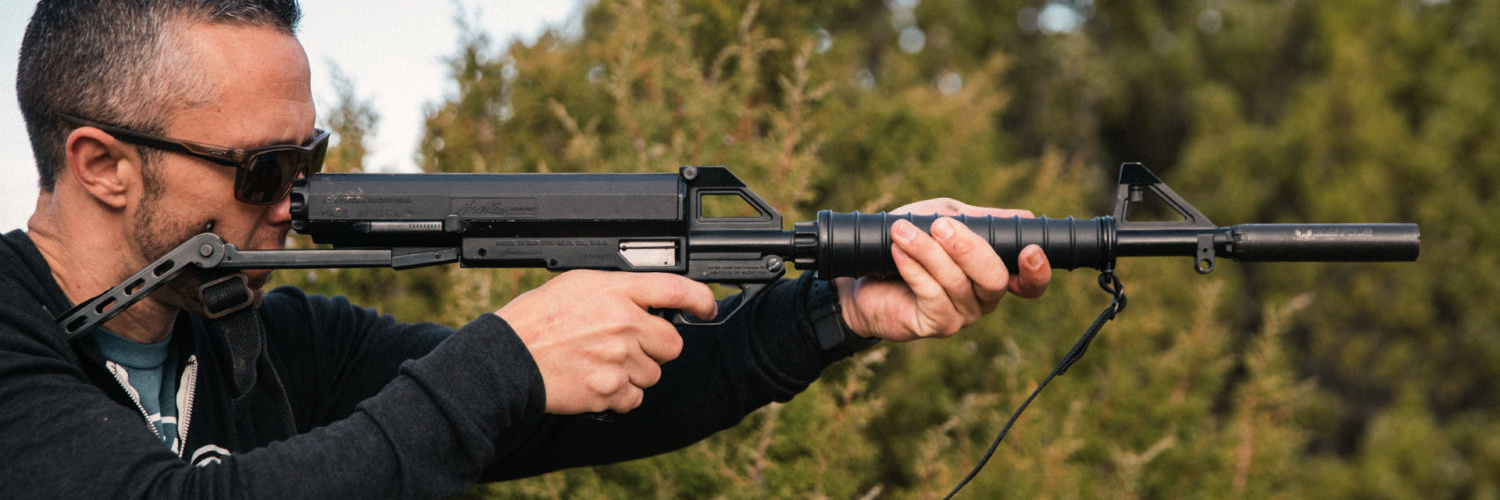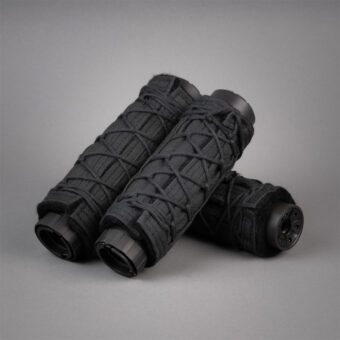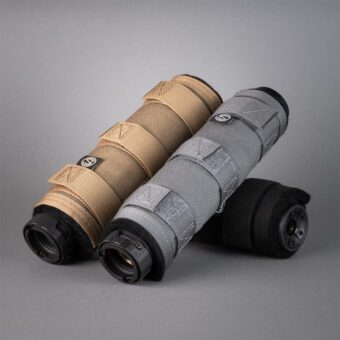A Brief History of the Automatic Rifle
William Lawson
Automatic rifles have been standard issue for the world’s armies for decades. Nearly every modern frontline soldier carries one, and the army without such a weapon would be underequipped indeed. But that standard evolved slowly from the first widely issued automatic rifle in 1916. Another 28 years passed before Germany moved toward issuing automatic rifles to their regular infantrymen.
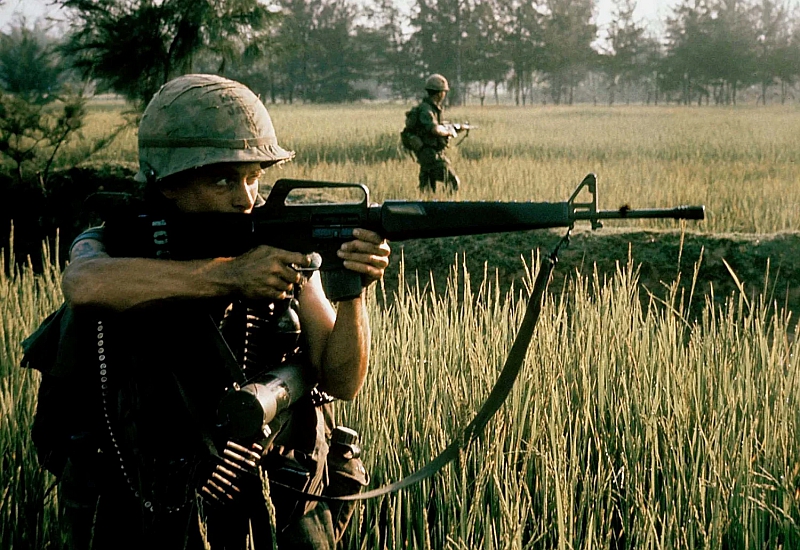
But the history of automatic rifles stretches back to the 19th century. Automatic rifles required three decades of development before becoming a viable battlefield weapon system. So, let’s look briefly at how automatic rifles evolved, based on their users’ perceived needs.
We should note that this is not a technical article. The author is a historian by trade. He is most certainly not an engineer or even a mechanic. This article therefore concentrates on perceived historical philosophy of use trends. It does not presume to account for soldiers’ actual use of automatic versus semi-automatic fire.
The First Automatic Rifles
The earliest known reference to a realistic automatic gun mechanism dates to 1854. Sir Henry Bessemer, inventor of the Bessemer process for manufacturing steel, filed a patent for what he characterized as an improvement “in constructing guns so that the reactive force of explosive gunpowder is made the agency of mechanism to reload and to discharge the gun.” The patents dealt with heavy guns, like artillery, but Bessemer seems not to have pursued his ideas.
The trail picks up with machine gun inventor Hiram Maxim, who filed an 1883 patent for adapting ordinary manual-loading rifles for automatic operation. He applied his ideas to a Winchester rifle (I don’t know which model), an unnamed bolt action rifle, and the Peabody Martini rifle. The idea was limited to automatic extraction and ejection, but it was a start. Another Maxim patent from 1891 illustrates a crude gas operated piston system. None of these patents bore fruit, but the ideas were there.

Austrian gunmaker Ferdinand Mannlicher built the experimental M1885 rifle in full and semi-auto. The design was impractical thanks to black powder fouling, but it influenced later automatic weapons like the German MG 34 and MG 42 machine guns and the M1941 Johnson Machine Gun.
The Italian Cei-Rigotti Rifle was almost the first automatic rifle to be adopted by a national military. The rifle began as a gas operated conversion of the Vetterli rifle in 1886. After several refinements, the Italian navy ordered 2,000 Cei-Rigotti’s but the order was never fulfilled. An updated select-fire carbine version appeared in 1900, but jamming problems and inaccurate fire doomed the rifle, despite interest from the Italian Army.

Further realistic development had to wait for more immediate motivation. World War I provided that motivation, and gunmakers responded.
World War I and Walking Fire
The French, Americans, and Russians all fielded viable automatic rifles in World War I. The French Chauchat and Russian Fedorov Avtomat entered service in 1916, with the US Army receiving the Browning Automatic Rifle (BAR) in September of 1918.
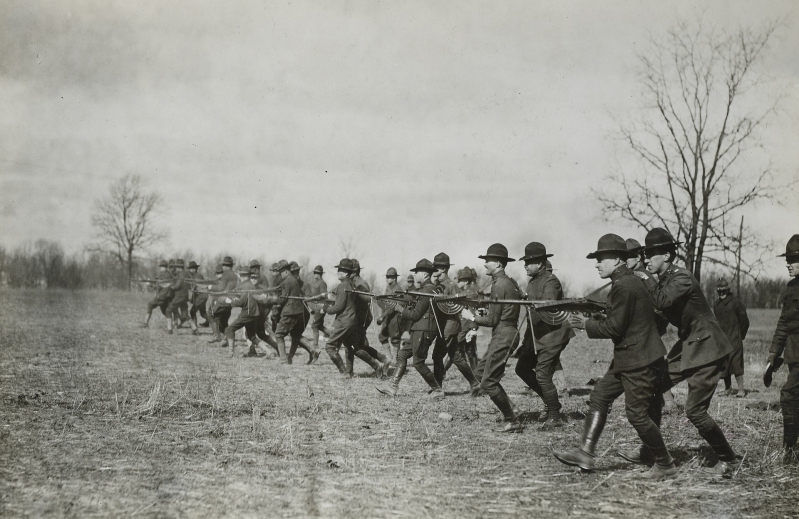
Designed in 1907, the Le Fusil Mitrailleur Modele 1915 “Chauchat” was chambered in the 8mm Lebel cartridge, which fed from a semi-circular detachable magazine. Despite essentially being a light machine gun, the French Army used the Chauchat for their “walking fire” doctrine, in which troops advanced while firing from the hip. The automatic Chauchat was better suited for this than the standard bolt action infantry rifles. American troops adopted this technique when they arrived in mid-1918, using some 16,000 French Chauchats until re-equipped with BAR’s that fall.
The BAR was a John Moses Browning design. Browning foresaw American involvement in World War I early on, along with the need for an American light machine gun. Browning presented the prototype to Colt on February 27, 1917, 39 days before the US declared war on Germany.
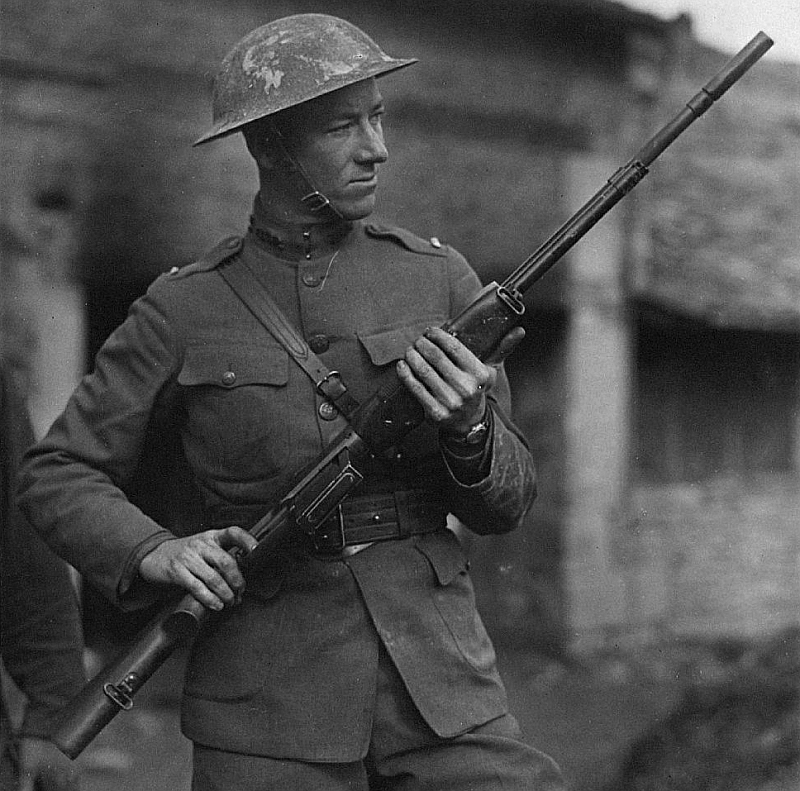
The US Army adopted the M1918 BAR a year later, with Winchester being contracted for 25,000 units chambered in .30-06 Springfield. The BARs arrived in France in June of 1918, and American line units took initial delivery in September. The BAR was far more reliable than the Chauchat, which American troops disliked for that reason.
Russian gunmaker Vladimir Federov designed the Federov Avtomat (FA) in 1915. Adopted the next year, the FA was among the first practical automatic rifle designs. But the Russians employed their new rifle differently than the French, Americans, and British. Russian doctrine called for two-man FA teams. The gunner fired the rifle, while the ammo bearer did what ammo bearers do and carried a Japanese Arisaka bolt action rifle.
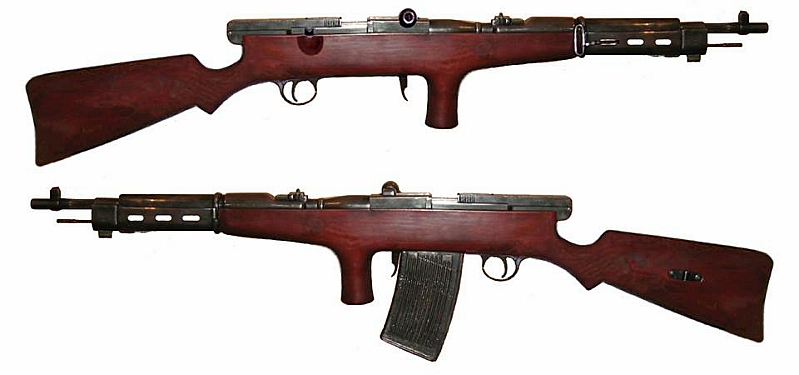
Federov had recognized the value of a smaller cartridge to recoil control, especially in automatic fire, something other nations didn’t perceive until World War II. The weight savings for the soldier was valuable as well. No Russian intermediate caliber existed at the time, so he used the Japanese 6.5mm cartridge, which was smaller and lighter than the standard Russian 7.62x54R, hence the ammo bearer’s Arisaka rifle. Both men carried the same ammo on stripper clips, and the ammo bearer provided security for the FA gunner.
World War II Points to the Future
Automatic rifle development was mostly stagnant during the Interwar period, with most efforts going toward machine guns and submachine guns. Some gunmakers worked on self-loading rifles, but most were semi-auto. Even so, every combatant entered World War II with bolt action rifles as their standard infantry weapon. The United States, with the M-1 Garand, was the sole exception.
World War II was a mobile conflict, as opposed to World War I’s Western Front. All the major combatants soon perceived that lighter weapons with more firepower created distinct advantages. They solved that immediate problem with pistol caliber submachine guns like the Grease Gun, Thompson, PPSh, STEN, and Schmeisser.
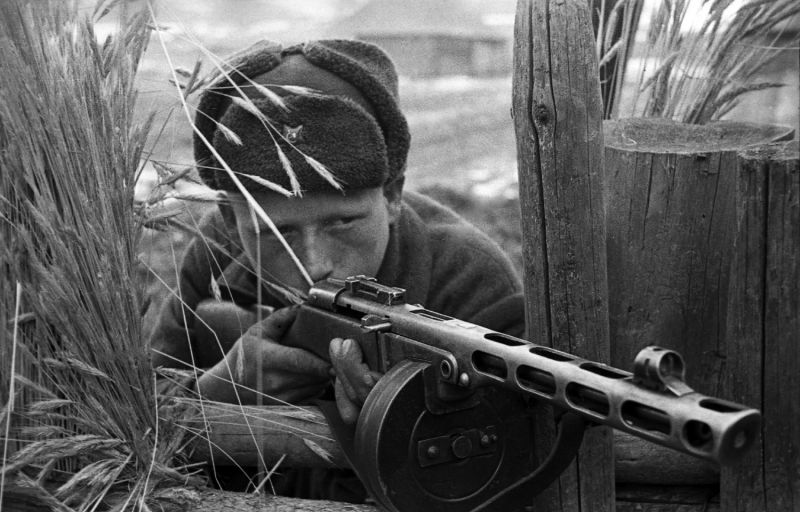
The United States also adapted their new M-1 Carbine for infantry and paratrooper use, eventually converting it to select-fire late in the war. The BAR gave good service, but it was more of a squad automatic weapon by this time. The Soviet Union introduced Sergei Simonov’s select-fire SKS rifle during their final drive to Berlin, getting a jump on postwar automatic rifle development.
The Sturmgewehr 44 H3
But the real advance was the German Sturmgewehr 44 (StG 44) Rifle. Developed by famed gun designer Hugo Schmeisser, the StG 44 was the world’s first true assault rifle. German research showed that most infantry combat occurred within 300 meters, negating the need for heavy, long-range rifles using full-size cartridges. Experience also showed the battlefield utility of small caliber submachine guns. So, the Germans looked to combine subgun firepower and capacity with a rifle that was effective out to 300 meters.
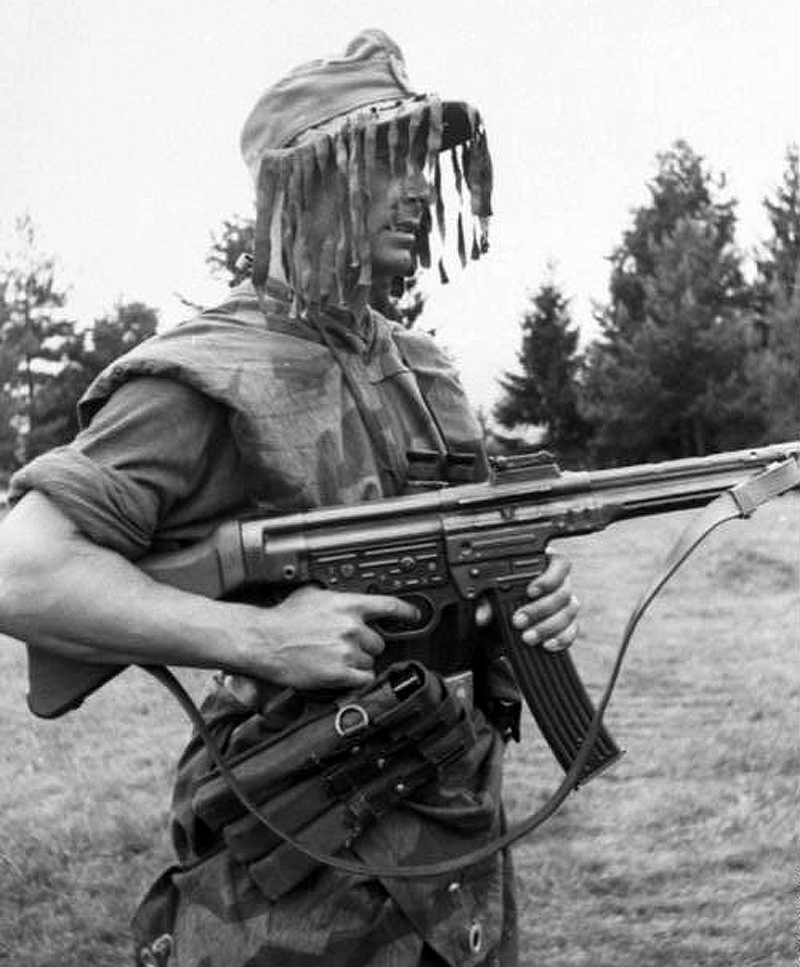
Planners also called for an intermediate round, reducing recoil, and allowing soldiers to carry more ammunition. The StG 44 fired the 7.92x33mm Kurz round, itself a cut down 8mm Mauser cartridge. The new round wasn’t ideal, but it worked, while also easing logistical concerns. The StG 44 reduced manufacturing costs by using stamped steel components, a feature that influenced later rifle designs, as we shall see. The Sturmgewehr, or “Storm rifle,” sparked the term “assault rifle.” Sturm, or storm, in this case referred to storming an enemy position, as in “Have fun storming the castle!”
Transitional Automatic Rifles
The Cold War years saw automatic rifles come into their own. Bolt action rifles were clearly obsolete, and armies moved toward select-fire options for their combat units. The Soviet Union led the way, but two World War II leftovers bridged the gap between that war and the emerging East-West strategic standoff.
The American M-1 Carbine’s success led to 1944’s select-fire M-2 version. The original design was supposed to have that capability anyway, but the suddenness of Pearl Harbor forced it into production before that part was developed. The StG 44’s appearance spurred a return to the select-fire concept. The Carbine only needed small internal changes and a selector switch. New 30-round magazines were added to leverage the M-2’s 700-750 rounds per minute fire rate.
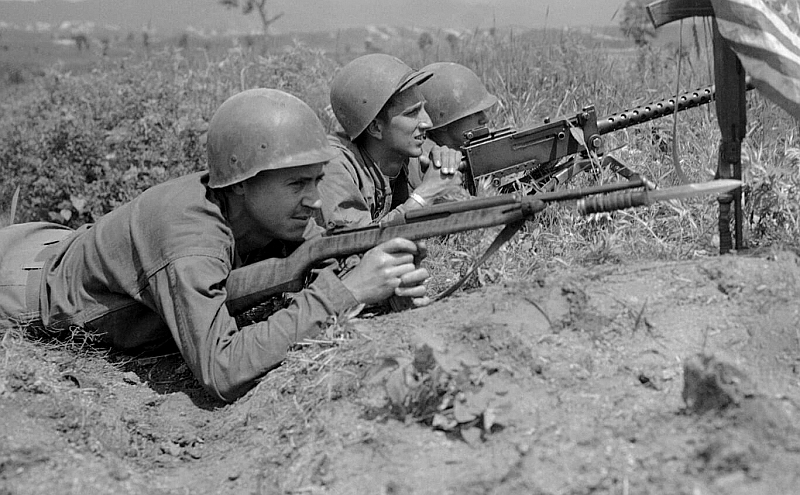
The M-2 only entered production in April of 1945, right as the war in Europe was ending. But conversion kits were sent ahead, and some field armories upgraded their existing M-1s. The M-2 did see action in the Philippines and Okinawa. The M-2’s impact on World War II was limited thanks to its late entry. But it served throughout the Korean War and even Vietnam with US Special Forces soldiers, and the South Vietnamese and South Korean Armies.
The Soviets, meanwhile, had long been looking to upgrade their small arms inventory before the 1941 German invasion lowered that priority. But like the Germans, they recognized the value of lighter weapons using less powerful cartridges. Captured stocks of German 7.92×33 ammo inspired the new 7.62×39 cartridge, which debuted in 1944.
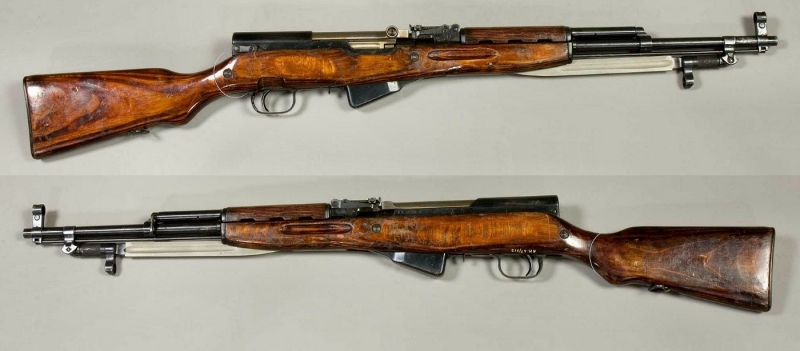
Simonov’s SKS won the subsequent trials for a rifle built around the new cartridge, though a submission from an upstart named Mikhail Kalashnikov drew notice. The SKS initiated a new direction for Soviet small arms by deliberately using loose tolerances for greater reliability. The Soviets deployed an early SKS in the war’s closing months, using that experience to refine the rifle before its official adoption. But the SKS was always a stopgap until the Soviets could produce a long-term rifle solution. They didn’t wait long.
The Cold War and the Assault Rifle Concept
For the Soviets, captured German StG-44 rifles showed the way to the future. But the Soviets didn’t rip off the German weapon, as some have claimed. Mikhail Kalashnikov no doubt had access to the STG-44 by 1945. But the Avtomat Kalashnikova 47’s (AK-47) design is quite different.
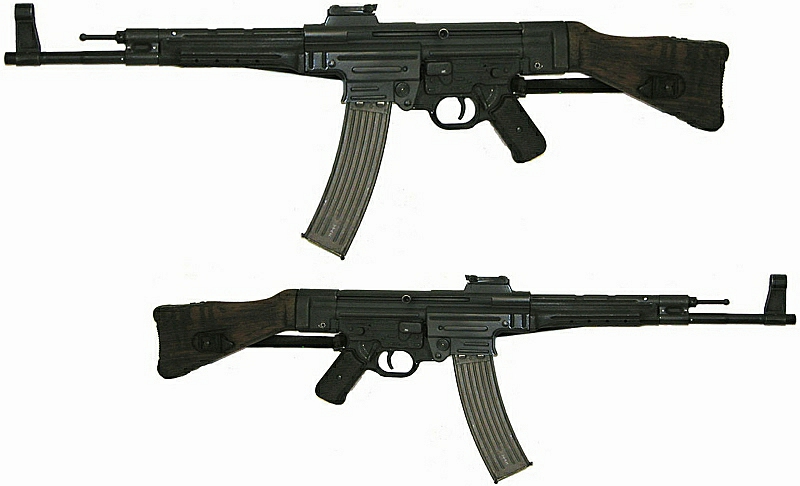
Kalashnikov’s AK-46 and AK-47 rifles show evolutionary design elements from the SKS (gas system and recoil spring), the Tokarev SVT-40 (recoil spring and double stack, double feed detachable magazine), the M-1 Garand (2-lug rotating bolt, trigger group, and possibly the bolt carrier/operating rod), and the StG-44 (stamped steel receiver, ribbed gas tube, and long stroke gas piston with gas rings).
Kalashnikov’s design won the 1947 trials and was designated the AK-47. The only concern was a lack of accuracy with the new 7.62×39 cartridge, but the rifle’s robustness was deemed more important. The accuracy issues were ironed out later. Kalashnikov’s rifle epitomized the early assault rifle concept of a lighter, select-fire weapon chambered for an intermediate cartridge. That combination allowed greater mobility while increasing each infantryman’s potential firepower.
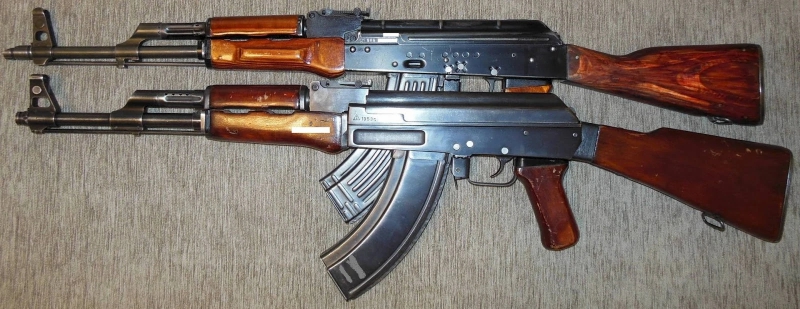
The AK-47, in all its variants, was easily the most prolific small arm of the 20th century. The rifle’s descendants are still the frontline weapons of several major nations and many smaller ones. One in five of the world’s firearms, some 100 million, is estimated to be some kind of AK.
The West Takes the Battle Rifle Detour
While the Soviets looked to the future, the United States Army looked backward. Despite evidence to the contrary, including requests from its own weapons experts, the Army doubled down on the battle rifle, based on its preference for a large, powerful round and the aging M-1 Garand’s admitted success.
The Army’s one concession was the shorter 7.62×51 NATO cartridge, which was a bit lighter and less bulky than the M-1’s venerable .30-06. The M-14 was essentially an upgraded, select-fire Garand fed from a 20-round detachable magazine. Adopted in 1957, eight years after the SKS and AK-47, the M-14 was plagued with problems. It was all but uncontrollable on full-auto fire, and it was heavy.
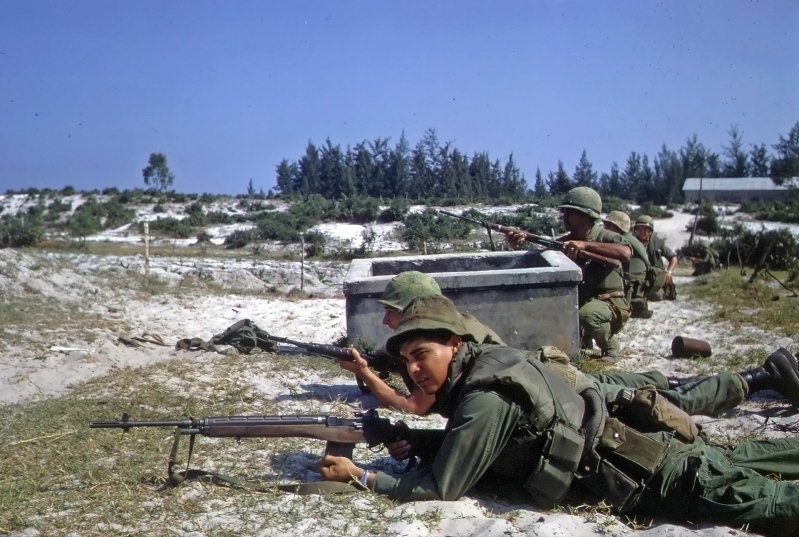
The Vietnam War brought these issues to the fore. Head-to-head encounters with the AK showed that the M-14 was outclassed, not least because US soldiers couldn’t carry enough ammo to maintain fire superiority over the communist rifle. These realities forced the Army to hurriedly adopt the M-16, though the M-14 remained in service in specialized roles, which it still does today.
Across the Atlantic, Belgium’s FN Herstal developed the iconic FAL rifle. But many people don’t know that the FAL was originally designed for an intermediate cartridge for the same reasons the Germans and Soviets took that route. The FAL prototype was chambered for the StG 44’s 7.92×33 round, though the British convinced FN to change it to their new intermediate .280 British cartridge. But the US Army pressured NATO, and FN, to chamber the FAL in their new “.30 Light” cartridge, which became the 7.62×51 NATO. Despite the FALs undeniable success as “the Right Arm of the Free World,” the 7.62 NATO chambering made it a battle rifle, altering its role as the West still lacked a proper modern assault rifle.
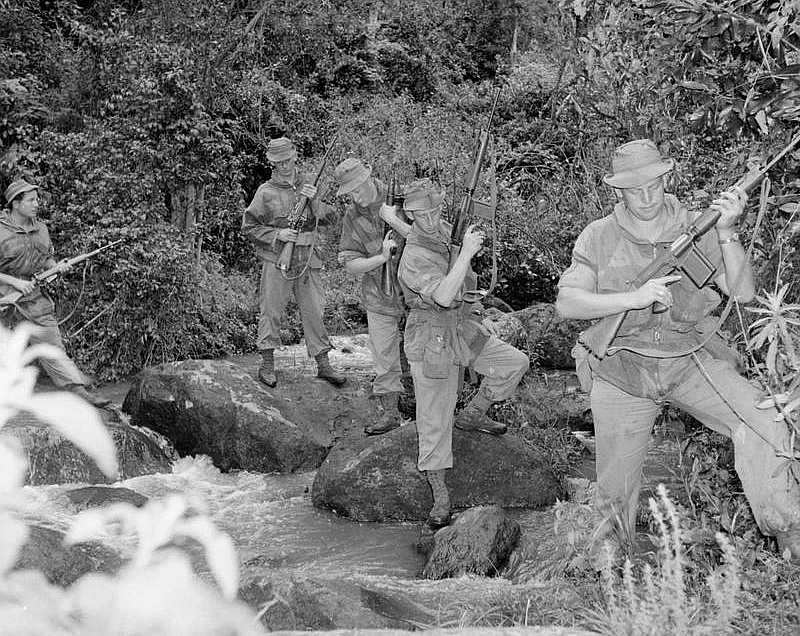
Other Western battle rifles from this era include the Spanish CETME, which begot the H&K G3. Great rifles, but still not the AK counter the West needed. To be fair, thanks to Soviet secrecy, they didn’t really know they needed it. But Vietnam fixed that.
Vietnam Exposes the Truth
Eugene Stoner’s M-16 marked the US Army’s reluctant acceptance of the assault rifle concept. AKM-equipped North Vietnamese soldiers will do that, though Defense Secretary Robert McNamara had to force the issue. The M2 Carbine had filled that role up to that point. But the M2 was never the standard infantry weapon like the M-16 became, nor was it even close to challenging the AK. Being nearly two decades behind the Soviet assault rifle doctrine, the Army had some catching up to do.
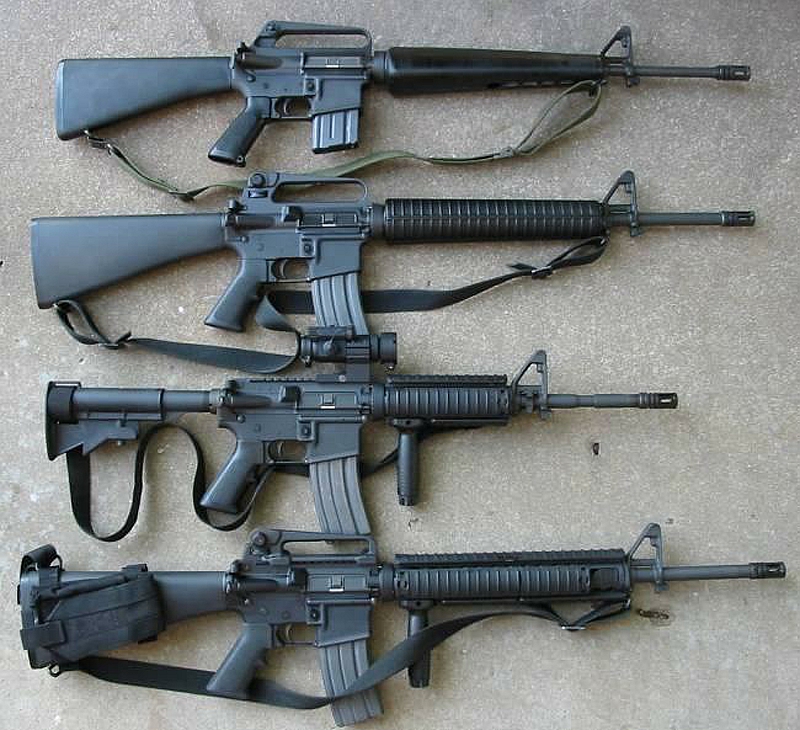
The M-16 got a bad reputation early on, largely due to persistent misunderstanding of the platform, poor training, and its rush into service in Vietnam. Soldiers receiving the first M-16s were told that they didn’t have to clean it. That was clearly an error, especially in the Southeast Asian jungles and the Mekong Delta. But time has shown that a properly maintained M-16 and its descendants, like the M-4 Carbine, are reliable and capable weapons, eventually becoming America’s longest serving military rifle. The platform’s longevity and ability to evolve clearly demonstrate Stoner’s genius.
The Modern Era
Many modern service rifles are updated versions from the Cold War Era. The M-4 and AK-100 series come to mind. But a few others deserve mention. Let’s start with bullpups, and then we’ll hit a couple others.
Bullpup rifles seem like odd ducks, what with the breech, firing mechanism, and magazine well located behind the grip and trigger group. But they offer certain advantages, particularly the ability to feature a full-length barrel while maintaining a compact firearm. The best explanation I could find on the term “bullpup” speculates that it was a 1930s analogy comparing such firearms to bulldog puppies, which were “squat, ugly, but still aggressive and powerful.” The British called such puppies “bullpups.” True or not, that’s the best I’ve got.
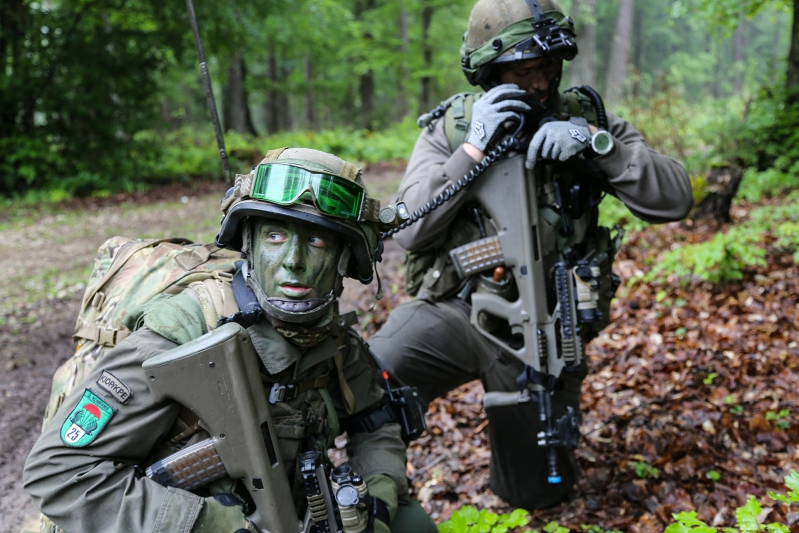
Notable bullpups include the Steyr AUG (yes, I know it debuted in 1977, but it fits better here), FN 2000, and the Israeli Tavor series. The Enfield L85/SA80 family of bullpups are best described as being exemplars of how NOT to build a bullpup rifle system.
H&K has produced several quality post-Cold War select-fire rifles, including the G36, the HK416, and the HK433. The G95A1 and G95KA1 recently replaced the G36 as Germany’s standard issue infantry rifle.
Finally, the US military is currently replacing the M-16/M-4 platform with the new Sig Sauer MCX Spear. The new rifle is currently designated the XM-7. It’s interesting to note that the US Army is going back to a somewhat larger cartridge, the 6.8x51mm Sig (.277) Fury. The round is described as an intermediate cartridge, though its ballistics point toward a full powered round with a higher chamber pressure, velocity, and energy on target than the 7.62×51 NATO cartridge. It’s too early to tell how that will shake out in combat.
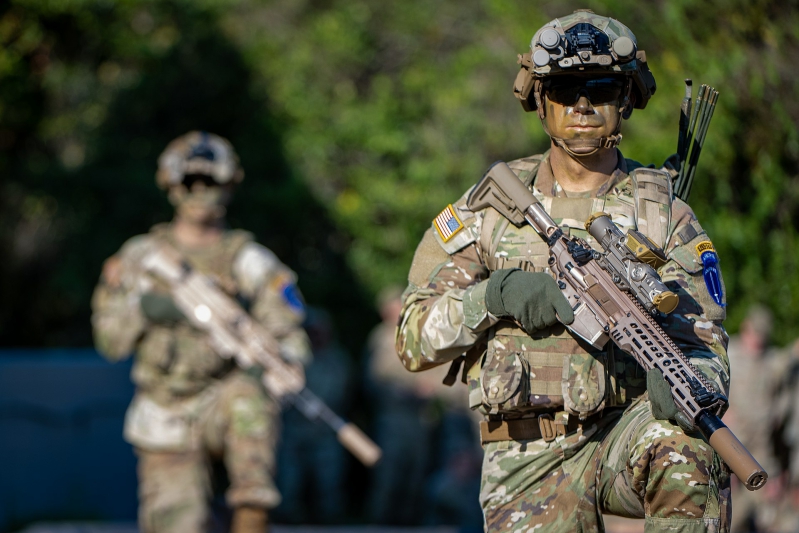
Still Evolving
The XM7 shows that automatic rifles are still evolving. Both World Wars and the Cold War conflicts drove change based on new technology and fighting doctrines. It’s hard to say whether technology drives doctrine or the other way around. It’s probably both.
Weapons continually evolve based on those factors. Armies develop and adopt rifles that they think will facilitate how they intend to fight. The actual fighting usually drives refinements and sometimes stark change, as it did in Vietnam.
One thing is certain: we haven’t reached the pinnacle of rifle development, and we probably never will. As firearms enthusiasts, all we can do is ride the wave. And honestly, that wave looks pretty tasty.



